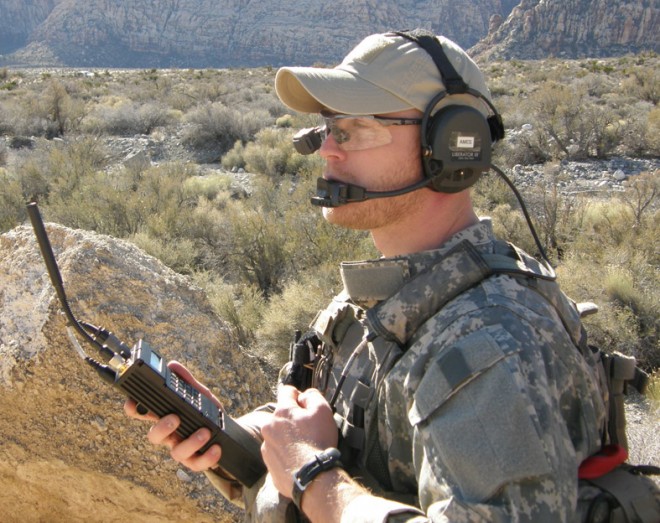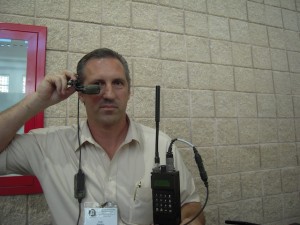When Kyle Stanbro retired from the military in 2004, he put his energies into making a lighter and more physically intuitive video receiver for ground forces to receive UAS feeds to replace the ToughBook currently in use.
Called the Mover-IV, the foot-long black push-button device looks like a standard radio. In fact, it’s a receiver for real-time video that patches into an eyepiece to display the feed. Weighs just three pounds. He’s sold more than 100 of them to the U.S. Special Operations Command.
“Troops may have carried small, portable receivers that allowed them to watch the video feed being shot by an aircraft overhead,” Nathan Hodge wrote in the Wall Street Journal in an article about commandos’ access to digital imagery during the Osama bin Laden raid. “Some of those receivers look something like a rugged iPad; others can be worn, with small monocular screens that clip onto helmets.”
Stanbro wasn’t part of the Abbottabad mission. So he can’t say how the SEALs watched video from the stealth drone overhead. But that’s throat-clearing. “Coincidentally,” he says proudly, “that sounds very similar to this system right here.” His Galaxy tablet provides another display for the footage, one that can be velcro’d onto a vehicle dashboard.
For years, U.S. troops have been outfitted with a system called Rover, which was supposed to let infantrymen watch overhead footage on a tablet computer. In practice, the things were often too heavy and too finicky in the heat to bring on patrol.
Mover doesn’t have those issues. But it does share a flaw with Rover — and the whole drone-video-to-the-ground construct, as currently assembled. The video feeds are sent in the clear, unencrypted. Which means the footage could be intercepted by a clever adversary. (The next gen of Movers should provide a partial solution. It’ll be years before all the drones get encrypted transmitters, though.)
The eyepiece Stanbro selected for the Mover-IV is the Vuzix Tac-Eye, a lightweight high-resolution screen that attaches to a helmet and fits neatly over your non-dominant eye. (You want to keep your dominant eye free for shooting.) Stanbro gestures to his partner, Clark Dever of Vuzix, who hooks up a camcorder to another Mover-IV and starts filming a hallway in the Tampa Convention Center, where the Special Operations Forces Industry Conference is in full effect. Stanbro hooks up the Tac-Eye to his Mover-IV through a standard six-pin connector and hands it to me.
As Dever moves the camera around, I see a group of businessmen behind me, chatting someone up on the virtues of their own defense-related product. They show up as dense, dark objects on a green screen. My other eye is free to see ahead of me, and my peripheral vision out of both eyes is clear. This may have been what it was like to keep one eye on the inside of bin Laden’s compound and the other on whatever the stealth drone picked up outside.
It works with more than unmanned aircraft. If there’s a manned spy plane overhead, the Mover-IV just needs the frequency or the band over which it securely broadcasts to receive the video feed, a process of pressing two buttons on the device. “Personal experience” got him several of those frequencies, he says.
Source: Wired Danger Room


